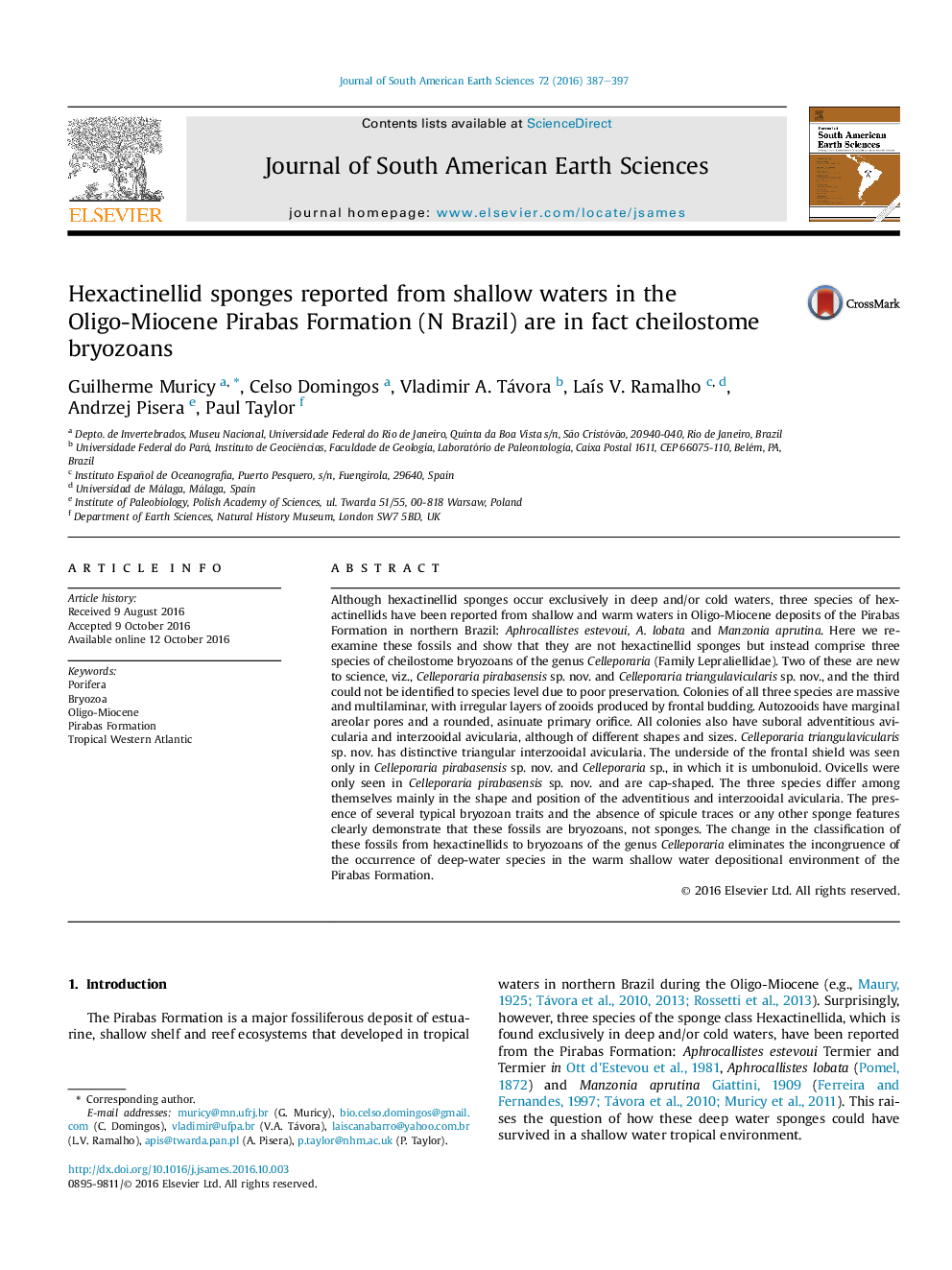| Article ID | Journal | Published Year | Pages | File Type |
|---|---|---|---|---|
| 4681973 | Journal of South American Earth Sciences | 2016 | 11 Pages |
•Both fossil and recent hexatinellid sponges occur exclusively in deep or cold waters.•Three fossil hexactinellids were reported from warm, shallow-water Oligo-Miocene deposits of Pirabas Formation, in Brazil.•Here we show that these fossils are not sponges, but bryozoans of the genus Celleporaria (Cheilostomata).•Species of Celleporaria are common in warm, shallow waters.•Our results resolve the apparent paradox of the occurrence of deep water sponges in shallow tropical deposits.
Although hexactinellid sponges occur exclusively in deep and/or cold waters, three species of hexactinellids have been reported from shallow and warm waters in Oligo-Miocene deposits of the Pirabas Formation in northern Brazil: Aphrocallistes estevoui, A. lobata and Manzonia aprutina. Here we re-examine these fossils and show that they are not hexactinellid sponges but instead comprise three species of cheilostome bryozoans of the genus Celleporaria (Family Lepraliellidae). Two of these are new to science, viz., Celleporaria pirabasensis sp. nov. and Celleporaria triangulavicularis sp. nov., and the third could not be identified to species level due to poor preservation. Colonies of all three species are massive and multilaminar, with irregular layers of zooids produced by frontal budding. Autozooids have marginal areolar pores and a rounded, asinuate primary orifice. All colonies also have suboral adventitious avicularia and interzooidal avicularia, although of different shapes and sizes. Celleporaria triangulavicularis sp. nov. has distinctive triangular interzooidal avicularia. The underside of the frontal shield was seen only in Celleporaria pirabasensis sp. nov. and Celleporaria sp., in which it is umbonuloid. Ovicells were only seen in Celleporaria pirabasensis sp. nov. and are cap-shaped. The three species differ among themselves mainly in the shape and position of the adventitious and interzooidal avicularia. The presence of several typical bryozoan traits and the absence of spicule traces or any other sponge features clearly demonstrate that these fossils are bryozoans, not sponges. The change in the classification of these fossils from hexactinellids to bryozoans of the genus Celleporaria eliminates the incongruence of the occurrence of deep-water species in the warm shallow water depositional environment of the Pirabas Formation.
Graphical abstractFigure optionsDownload full-size imageDownload as PowerPoint slide
